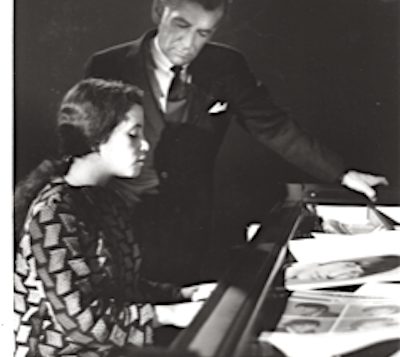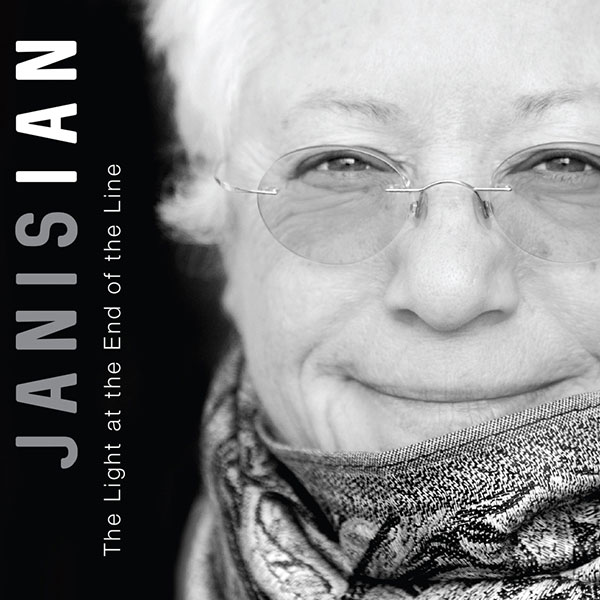IN JANUARY, singer-songwriter Janis Ian releases what she calls her “swan song” album, The Light at the End of the Line (Rude Girl Records). With nine Grammy nominations and two wins, the singer at age seventy has nothing left to prove, but she delivers an astoundingly resonant collection, her first full album in fifteen years.
Ian was propelled onto the national stage at the age of fifteen when Leonard Bernstein featured her in a television special, Inside Pop: The Rock Revolution (1967), along with songwriters Lennon, McCarthy, Jagger, Dylan, and others. Her controversial song “Society’s Child” about interracial dating had been banned on many radio stations, but Bernstein’s advocacy turned it into a Top Twenty hit.
In 1975, Ian returned to the pop charts with her achingly beautiful ballad of teenage angst, “At Seventeen.” Since then, major artists across genres, such as Nina Simone, Roberta Flack, Cher, Bette Midler, John Mellencamp, Barbara Cook, Nanci Griffith, and Joan Baez, have covered her songs. Dolly Parton, Willie Nelson, and Mel Tormé recorded duets with her. Charles Aznavour and Shirley Bassey championed Ian’s work when they performed in Europe. Celine Dion included “At Seventeen” in her Vegas shows.
Throughout a kaleidoscopic career, she continued writing laments and affirmative anthems through bankruptcies, health emergencies, failed relationships, and the vagaries of the recording industry. The artist in Janis Ian always prevailed as she sang of perseverance and resiliency for legions of fans on stages worldwide.
Ian was first outed as a lesbian in 1967 in The Village Voice, but it had little impact on her career. Early on, Bill Cosby called around to have her banned from television talk shows, to no avail, and Garrison Keillor felt she wasn’t “family values” enough for his Prairie Home Companion radio show. The singer and her wife, Pat Snyder, were married in Toronto in 2003 and were one of the first same-sex couples to be listed in The New York Times’ wedding announcements.

In addition to songwriting, she was a columnist for the LGBT news magazine The Advocate in the 1990s. She has been a writer of short science fiction and published an acclaimed memoir as well as a children’s book. Her foundation has granted over $1.2 million in scholarships to help adults return to complete their college education.
The twelve songs on The Light at the End of the Line are as vibrant as any in Ian’s eclectic catalogue. She says, “I love this album. There is an element of, ‘This is the absolute best I can do over the span of 58 years as a writer. This is what I learned.’ And I realized this album has an arc, and I’ve never really done anything like that before. … Arc as in rainbow, arc as in a circle, arc as something that comes back to itself and starts again. Like my career, and hopefully, my life as an artist.”
The new disc is replete with beautifully wrought, introspective ballads. The first single, “I’m Still Standing,” is a powerful reflection on the lessons of aging. Others include musings on immigration, the unbearable grief of losing a child, celebrating nature’s beauty, and an homage to her complicated heroine Nina Simone. No one does sad better than Janis Ian. The title track is a plaintive love song to her fans: “It’s the end of the line/ and I know it’s been rough/ Oh, but time after time,/ it was always enough/ You were there when I laughed/ You were there when I cried/ You are there as I tell you ‘Good-bye.’”
Other songs surprise listeners as the tenderness and sparse arrangement of “Perfect Little Girl” with Ian accompanying herself on piano is juxtaposed with the incantatory “Resist” with the singer rapping “I will not disappear” amid a cacophony of sound. A Gershwin-esque obligato clarinet augments her evocations in the bluesy “Summer In New York.” The final song is a rollicking Appalachian-inflected “Better Times Will Come” with guest artists Vince Gill on acoustic guitar, Sam Bush on mandolin, and Diane Schurr with a marvelous scat solo. What a fun and necessary pandemic salvo this is.
The Light at the End of the Line showcases Ian’s prodigious talents in top form with its superbly crafted songwriting, crystalline singing, and exquisite production values. No resting on laurels here, Ian’s artistry is as potent and glorious as ever. In support of this new album, she embarks on her final North American tour next month through the fall of 2022—not to be missed as this queer icon closes out the performative chapter of her remarkable career.
John R. Killacky, who is currently serving in the Vermont House of Representatives, recently published a compilation of his writings titled Because Art (Onion River Press).







